Author: GO2MARS WEB3 Research
Does anyone still remember how people socialized before Facebook appeared in 2004?
According to unscientific statistics: There are about 7 billion people on the earth, the probability of two people meeting is 0.00487, and the probability of knowing each other is only 3 in a billion. This means that 20 years ago, we had almost no chance to know a person in a different geographical location without a third party. However, the emergence of Facebook connected people from all regions to a network through the Internet, and social networks were born.
People used to be able to socialize only through letters and face-to-face, but now they can get to know strangers on the other side of the ocean by tapping the screen at will, which greatly shortened the distance between people. As a result, Facebook has become a dazzling star in the revolutionary Internet wave at the end of the 20th century and the beginning of the 21st century.
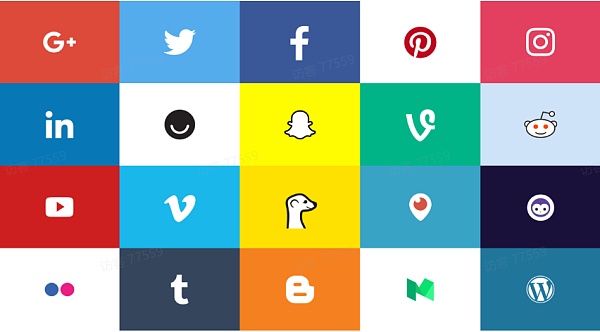
At present, the crypto market is in full swing, with the meaning of the Internet wave of the year.
With the arrival of a new round of bull market, excellent projects in various tracks are emerging in an endless stream. If Facebook came into being after the completion of the Internet infrastructure in 1999, then with the continuous construction of the crypto world, the Facebook moment of Web3 is about to come.
Take a look at the evolution of Web3 social
Learn from the past and learn from the future. Looking from the past to the future is extremely necessary for us to make predictions and deductions. In fact, before Lens, there was no product exploration specifically for social attributes in the entire Web3 track. As true OGs, Satoshi Nakamoto and his group of veterans were still accustomed to the retro-style communities of forum blogs. Although those forums were a bit crude, they also had a unique flavor.
When Discord appeared, people began to really think about what a decentralized social platform should be like. Discord's ultra-high open source attribute is tantamount to an iterative innovation of Internet social networking. Sufficiently rich custom permissions have begun to let people taste the sweetness of decentralized communities, but this seems to be a little short of the real Web3 - the decentralization of the community economic system.
Socialfi track came into being.
As the representative product of the first generation of Socialfi, Lens Procotol has attracted much attention for its extremely grand narrative and SocialFi concept, aiming to become the basic data layer of on-chain social networking. However, the task of improving the infrastructure on the chain is long-lasting, labor-intensive, and because no suitable way to embed assets in the product was found, in the early days of SocialFi's development, the "earning money" effect of users in the protocol was too weak, resulting in the inability to achieve long-term user retention.
Time came to 2023, and the second generation of Friend.tech became a phenomenal hit. The product focuses on the assetization of social network influence, attempts a one-to-many network-like social form, and the design of the Bonding Curve brings a large enough wealth effect to early participants. However, the bubble generated by continuous "wealth creation" eventually burst. In the final analysis, it is because the relatively closed system lacks sufficient externalities, resulting in a rapid loss of users after the wealth effect weakens.
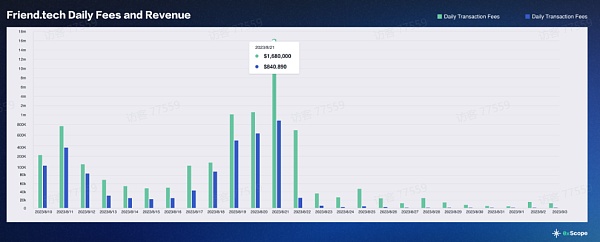
Developed to the third generation, new paradigm products represented by Farcaster and UXLINK began to emerge. Take Farcaster as an example. It has risen rapidly with many innovations, and has not only won the strong support of Vitalik, but also the favor of capital. Farcaster optimizes the user experience through the Frames function, allowing developers to create interactive posts for their audience. Users can participate in more forms of activities, including casting NFTs, participating in games for rewards, and even purchasing goods in the client Warpcast.
At the same time, Farcaster believes that deep community participation is better than superficial interaction data. Therefore, by encouraging long-form high-quality tweets and enabling features such as $degen rewards, these unique interaction models enable them to maintain excellent community activity and set a new benchmark for decentralized social networking in terms of community culture and activation.
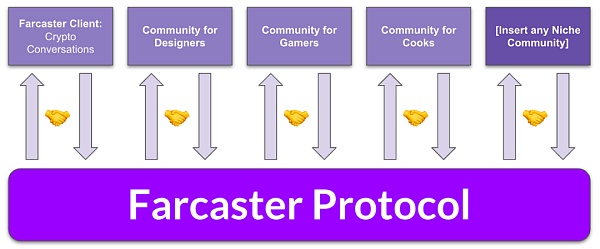
Challenges and Balance: Attempts to integrate Social and Fi
From Lens Procotol and Friend.tech, we found that it is difficult to grasp the balance between strengthening social functions and enhancing financial attributes, which is also the core of the success or failure of decentralized social platforms.
If you focus on social functions and ignore financial attributes, it is better to make an ordinary Web2 social application. Because in Web2, social platform technology is more mature, the user base is larger, and trust is easier to cultivate, so the overall development cost and customer acquisition cost will be lower. On the contrary, if you focus too much on the money-making effect and ignore the user's social experience, then the product itself does not have core competitiveness and sustainable development capabilities. When the bubble is too large, the system is prone to fall into a death spiral due to lack of externalities. In this case, it is better to issue a dog coin or a meme, which is simple and crude, and can make money faster.
Just like DeFi has ve(3,3) in its iteration, Web3 social networking also needs an economic model that suits its own track. This model should provide positive benefits to the platform, content creators/KOLs, and platform users in the social ecosystem. Specifically, creators can be rewarded for creating good content, and users can obtain expected benefits by deeply participating in the ecosystem, retaining more users on the platform, and improving the user retention rate and loyalty of the platform. In turn, it promotes users' payment behavior within the platform and attracts capital to join, forming a positive flywheel.
Third-generation applications such as Farcaster, by introducing a reward system, community incentives, and rich interactive functions, make users believe that they can gain direct or indirect benefits by deeply participating in the community, publishing high-quality content, and tracking KOL dynamics. Therefore, it has a high user stickiness, making users willing to stay in the community spontaneously, attracting KOLs and capital from other platforms to join, and then continue to invest in infrastructure and iteration to form a positive growth flywheel.
In a nutshell, finding a balance between the decentralized social platform Social and Fi is essentially to introduce externalities to create and sustain profit expectations for users.
AI: Unexpected Web3 Social Empowerment
In addition to improving past defects, Web3 social platforms are also actively exploring new growth points, and AI-driven is one of the main attempts. In the social field, the application of AI technology is not only limited to improving user experience, it is also deeply involved in the construction and development of the social ecosystem behind the scenes. By combining machine learning, LLM and other technologies, personalized content recommendations can be achieved, allowing users to find content and communities that are more in line with their interests. Web2 giants such as Twitter and Facebook have already mastered the AI recommendation algorithm, and domestic ByteDance has taken AI recommendation algorithms to the extreme, creating viral products such as Douyin and TikTok that are popular all over the world.

In Web3, UXLINK, another social rising star that is currently on par with Farcaster, has launched a new exploration and practice of AI empowerment. For example, AI technology is applied to the functions of creating, managing and maintaining communities. UXLINK pioneered the use of AI GroupKit Bot (an AI DApp) to help individuals or project parties establish and manage their community UX Group. In the future, UXLINK will also provide AI assistant-related functions, through quick search of online encrypted information, providing users with information gaps, etc., so that users can have a smoother social experience.

In the future, UXLINK can also use AI technology to optimize its incentive mechanism and adjust the reward distribution according to the user's contribution and participation. This can not only enhance user stickiness, but also ensure the effectiveness and long-term sustainability of the economic model.
In short, AI technology has brought huge development potential to Web3 social platforms such as UXLINK. It can not only improve user experience and promote community interaction, but also show value in multiple dimensions such as platform security and incentive mechanism.
Hidden BOSS: Reconstruction and Innovation of Trust
Although blockchain and decentralization are designed to improve trust, trust is still the biggest challenge for blockchain technology to be more widely used. New users are reluctant to get involved due to suspicion and fear. Developers are attacked by fake wallets and hackers, and scammers are difficult to trace through decentralized social platforms. These problems make decentralized products always plagued by trust issues. How to reconstruct and innovate "trust" so that new users are willing to join and stay on this platform? The third generation of Web3 social products is actively exploring ways to break the deadlock.
Way to break the deadlock No. 1 -- Emphasize the concept of "acquaintance social"
Those who have used social platforms know that most social platforms have a "people you may know" or similar functions. By linking users with their "acquaintances", it not only helps to cultivate trust, but also helps the platform achieve growth fission. Because when users receive invitations from acquaintances to join this platform, or new users enter this new environment and find that they have many acquaintances active on the platform, they will naturally have a certain degree of trust in the platform and are willing to continue using the product. At the same time, by joining functions such as groups with acquaintances, you can broaden your network and become "acquaintances" with more people, consolidating trust and activity on the platform. UXLINK, at the beginning of its design, targeted the niche field of acquaintance social networking. It introduced two-way social graphs and groups to strengthen trust by promoting interaction and consensus building among acquaintances. The six degrees of separation theory in social psychology mentions that any two people in the world can establish a connection through at most five people. It can be seen that promoting acquaintance social networking and building trust from point to surface will become the winning magic weapon for UXLINK to achieve user growth fission.
Solution No. 2 -- The old saying of "product power"
Building a complete social ecology and an active community atmosphere is very helpful in gaining the trust of new users. After all, sincerity is always a must-have. When users join a social platform, what comes into view is an active, deep and content-rich community, a complete social ecology, an excellent interactive interface, and a smooth user experience. With the product power in place, the cultivation of trust is a natural outcome. For example, when formulating its user growth strategy, Farcaster not only focuses on the invitation model of "old users bringing new users", but also strives to improve the quality of platform content, community activity and user experience. When users are invited to Farcaster, they are attracted by the experience of being close to Web2 social software, high-quality tweets and the presence of high-quality KOLs, and the trust of new users is successfully established.
Others' experience: Farcaster and UXLINK's ecological construction strategy
Farcaster
Farcaster adopts an open protocol and developer-friendly strategy, allowing new applications or services to be freely built based on its underlying protocol. The core concept of this openness is to encourage innovation and diversity, and to enrich the application scenarios of the ecosystem by giving developers freedom, from content sharing, online interaction to on-chain games, etc., thereby attracting a wider user base. The main effect of this strategy is the rapid expansion and innovation of the ecosystem, as well as the richness of the user experience. Through the Frames function and diversified front-end applications, while ensuring that the Farcaster social ecosystem has the experience of traditional social platform functions, it can also allow users to try innovative functions based on the advantages of decentralized technology, so as to attract users to stay on their own social platforms. For example, the flagship client Warpcast that ensures user convenience, and the aggregation tool Yup that supports multi-platform simultaneous posting. In this way, Frcaster not only increases the diversity of social interactions, but also improves user participation, exploring new models for Web3 social networking. At the same time, Farcaster encourages the active contributions of all participants through the incentive mechanism of community participation, and community members participate in the decision-making of ecological development, ensuring the active and sustainable development of the ecology.
In the Farcaster ecosystem, around the core protocol of Farcaster, a variety of front-end applications and services have emerged, playing different roles in the ecosystem.
Warpcast: The flagship client of the Farcaster ecosystem, with an interface and experience similar to Twitter, providing a safer social environment and richer interactive functions based on decentralization.
Searchcaster: The Farcaster ecosystem search engine, enabling users to easily discover and connect with content or other users of interest.
Yup: A social aggregation tool that supports users to publish and share content across platforms, providing users with a more convenient social media operation solution, which not only enhances user stickiness but also promotes Farcaster to break the circle
Jam and Alphacaster: Introduced new models of social finance and community governance, exploring new boundaries of Web3 social.
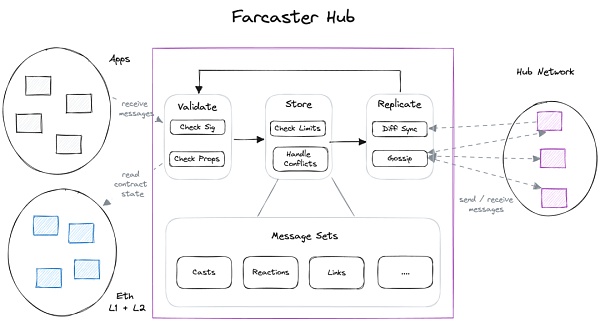
Another key innovation of Farcaster is the "Frames" feature: It allows developers to embed interactive mini-programs in users' social content. This innovation not only increases the diversity of social interactions, but also brings a new social experience to users. Through Frames, users can participate in activities such as games, voting, NFT casting and e-commerce shopping directly in the information flow, greatly enriching the interactivity and fun of social content.
UXLINK
UXLINK's ecological construction strategy revolves around building a decentralized, user-driven social platform.
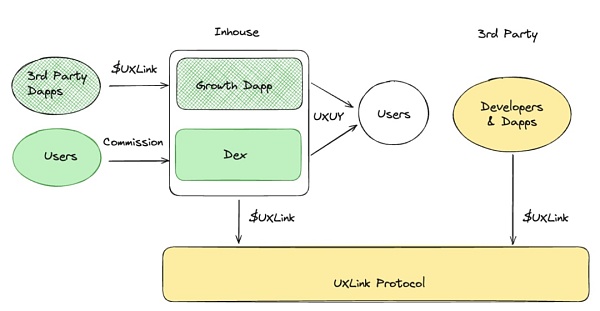
By integrating user-friendly DApps and an innovative dual-token economic model, UXLINK aims to lower the entry barrier for users while protecting the security of user assets. This strategy focuses on building a bridge of trust with users through technology to promote the healthy development of its own ecosystem. By integrating DApps related to user asset storage and transactions, users are first made to believe that storing and trading assets in the UXLINK ecosystem is safe.
At the same time, these DApps are designed to open up the key function of "payment" for UXLINK. Just like WeChat payment, it is natural to aggregate a series of functions such as takeout, travel, and express delivery into the WeChat ecosystem. Therefore, only by running through the key function of payment can there be a chance to break through the ceiling of the traditional social ecosystem.
UX Wallet:A wallet based on MPC and future account abstraction technology enhancements, providing users with social recovery and automatic execution of private keys, balancing security and ease of use.
UX DID/Profile:Using zero-knowledge proof technology, users can create SBT based on real-world connections and verify them through social applications such as Telegram, WhatsApp, etc., while protecting privacy and allowing users to inherit and use their own autonomous identities and off-chain social relationships
UX Social DEX:Provides a socialized trading platform for encrypted assets, including but not limited to token swaps, IDOs, and lending platforms.
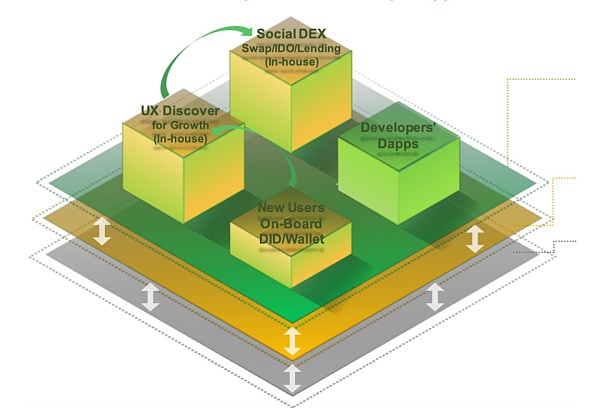
In addition, similar to Farcaster, the open ecosystem and developer support model ensures technological innovation and ecological diversification, while the hybrid scalable architecture provides good infrastructure support for the ecosystem. UXLINK's strategy focuses on promoting the sustainable development of the ecosystem and the active participation of the community. By incentivizing early users and community governance, UXLINK not only ensures fairness and growth incentives for the community, but also promotes technological innovation and application diversification through open interfaces and infrastructure construction.
In the protocol layer, UXLink retains open interfaces for the externalities of the ecosystem, including developers can efficiently manage user social identities and relationship data services through APIs and ABIs.
In the infrastructure layer, UXLINK adopts a hybrid scalable architecture (EVM + IPFS + cloud), adapting to EVM chains such as Ethereum mainnet, Arbitrum L2 chain, BNB chain, Polygon and Base Chain, integrating decentralized storage and centralized data indexing services, and retaining the scalability of the ecosystem from the beginning of infrastructure construction.
On the asset side, UXLINK adopts an innovative dual-token economic model, including $UXUY (utility token) and $UXLINK (governance token) to balance economic incentives and long-term governance within the ecosystem. The design of this relatively classic token economic model follows the concept of the ve(3,3) model, aiming to pursue the maximum return based on fairness for the entire ecosystem and the participants of the ecosystem. This economic model is designed to encourage users' active participation and contribution. Although it does not have the strong wealth effect of Friend.tech, it is more conducive to the long-term sustainable development of the system and community-driven governance to maximize the overall benefits.
As an incentive token for community and ecological development, the utility token $UXUY is mainly used to reward users who create social networks early to contribute to the ecology, thereby ensuring fair and incentive growth of the community. UXLINK uses asset quantity rather than price to incentivize early active users, and is relatively peaceful in creating bubbles.
From Crypto Adoption to Mass Adoption -- the importance of ecological construction is self-evident.
Although Farcaster and UXLink have similarities and differences in ecological construction strategies, they both embody a common concept: in the Web3 era, the success of social applications depends not only on their technological advantages or the scale of their user base, but also on whether they can build an open, diverse and continuously innovative ecosystem. Only through continuous ecological innovation and community cooperation, introducing positive externalities into the system and creating a positive growth flywheel can the long-term success of decentralized social forms be truly achieved.
Conclusion
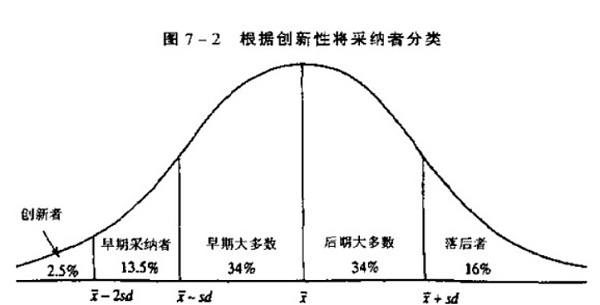
The innovation diffusion theory in communication studies proposes that whether an innovation is adopted by the public depends on five main stages: awareness, interest, measurement, implementation and adoption. Today, Web3 has walked out of the primitive jungle and has come to the stage of "implementation", although this means that the innovation of Web3 is currently only accepted and adopted in a small range around the world.
But it can be expected that under the materialism of history, Crypto Adoption to Mass Adoption is a reality. Just like a group of challengers came to the last locked door, whoever can find the password first will get the treasure.
 XingChi
XingChi














